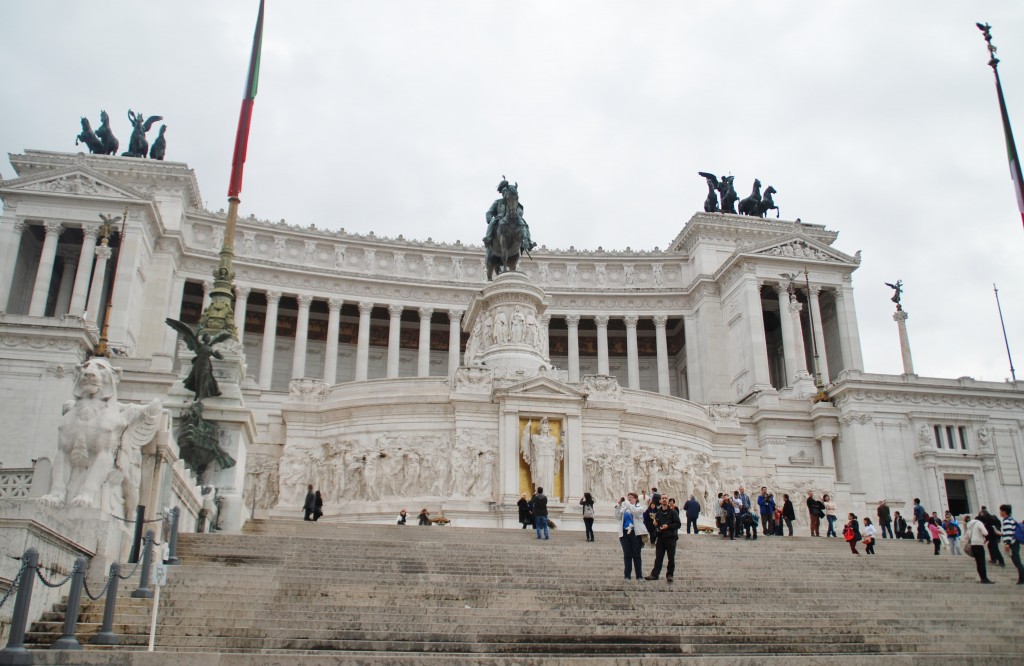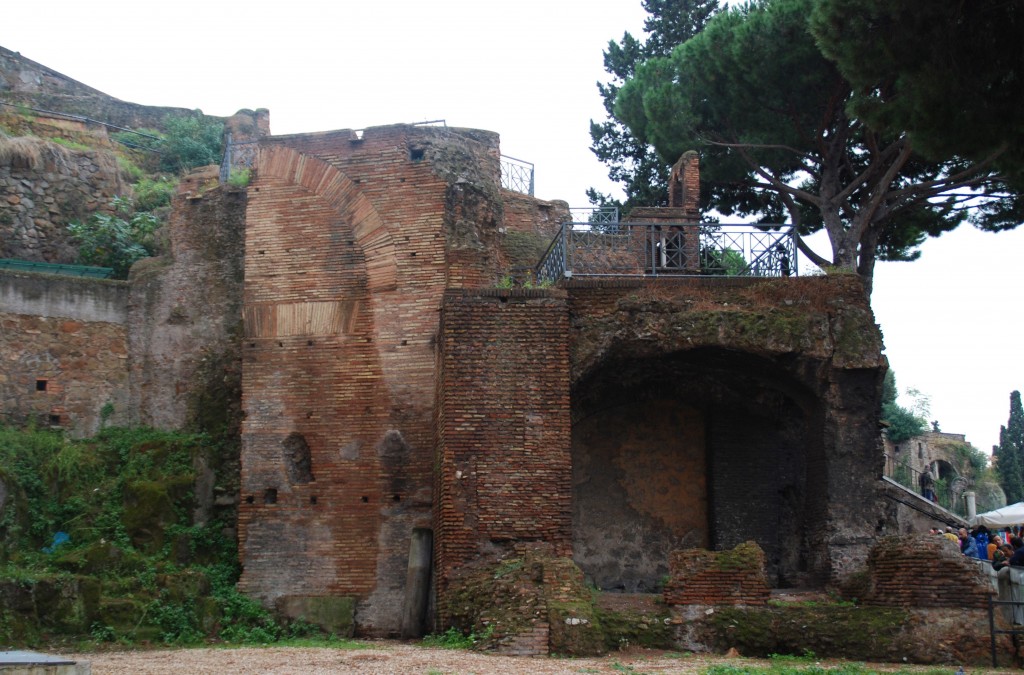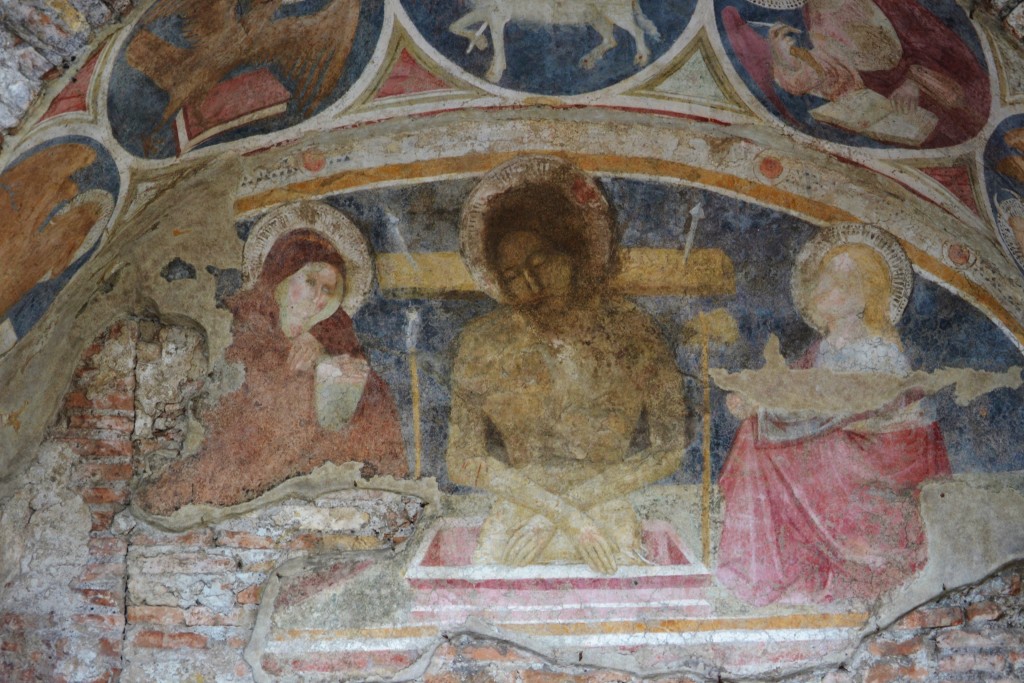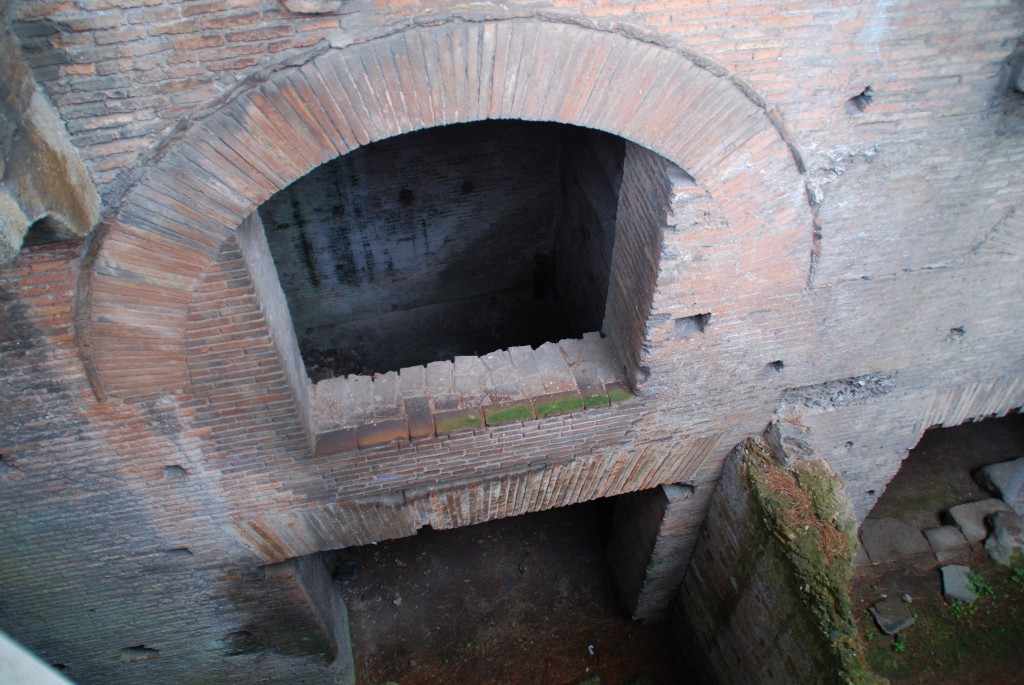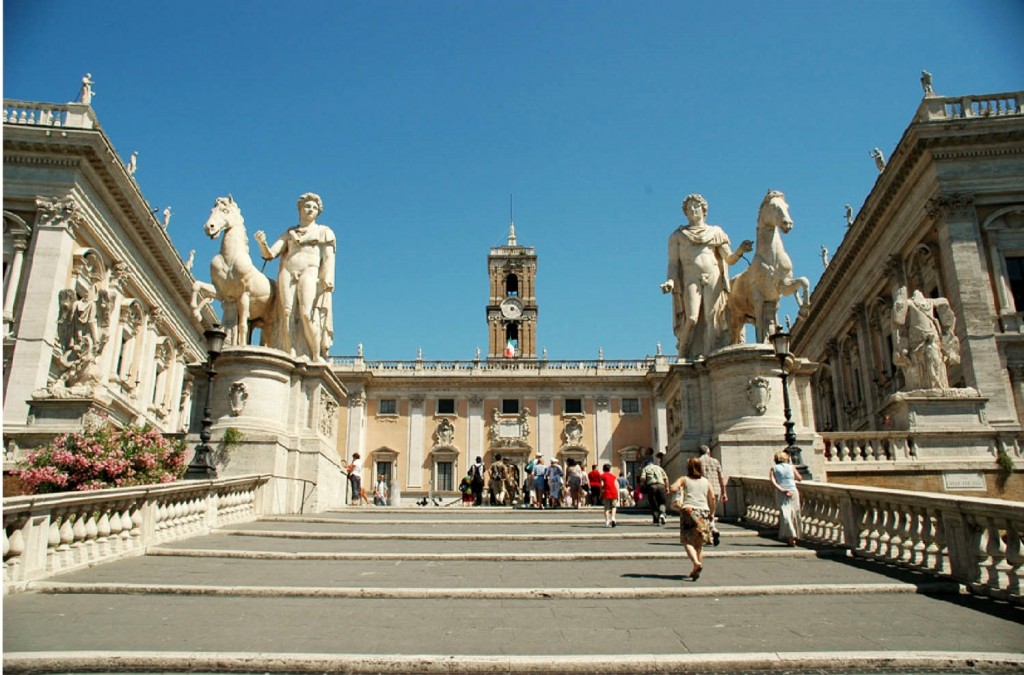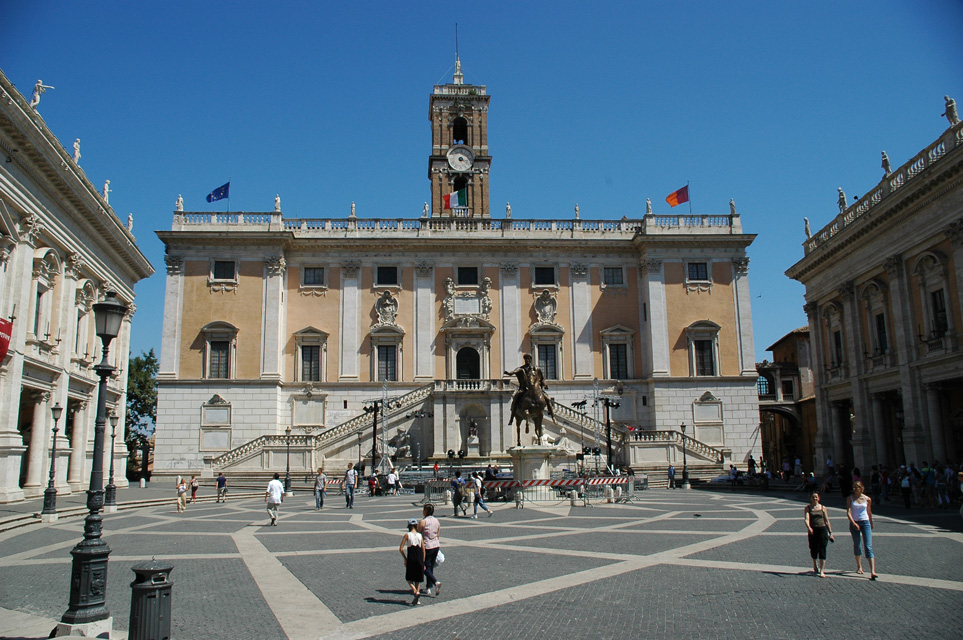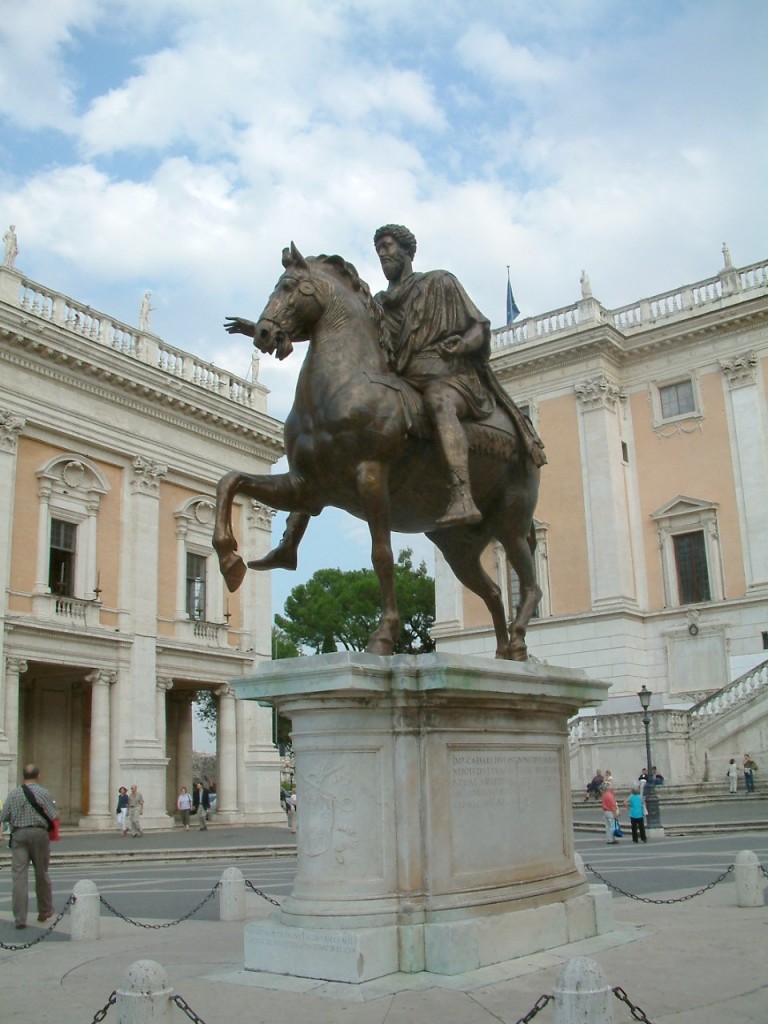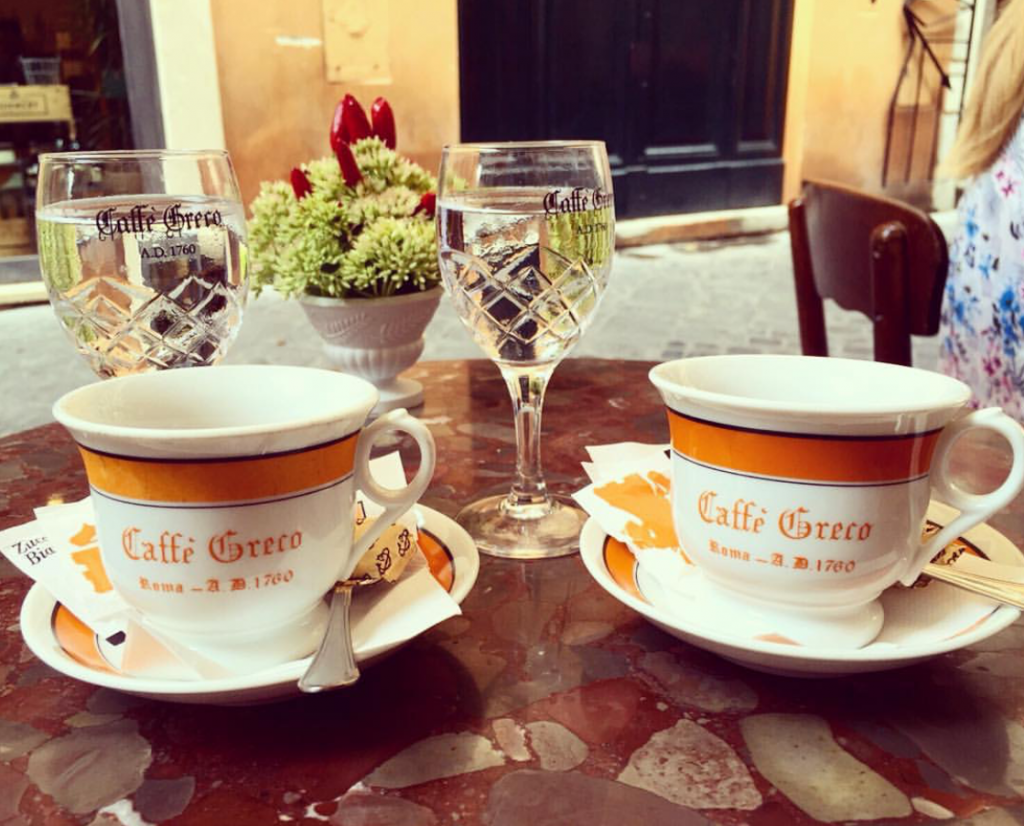
Caffe Greco has been a favorite among Romans and visitors for many years, and I could not wait to order a cup of coffee, grab an outdoor table and relax on the open square to people watch for a couple of hours. I checked my watch to make sure it was before 11 o’clock before I placed my order for a cappuccino because I learned that Italians do not order them in the afternoon.
Venturing out, I found myself standing at the bottom of a large set of stairs looking up at the Altare della Patria, The Altar of the Father. Known by tourists as the Victor Emmanuel II monument, it looks more like a government building than a memorial. Just like the Caesars of old, Italy’s first president has been deified with winged lions and horses, chariots and a statue of Victor Emmanuel II, elevated by a series of Roman gods.
“They call it the “Wedding Cake,” says the young hipster in his black jeans, denim shirt, black chunky boots and cap. His girlfriend and I take a moment to agree that the structure is white and layered, but that is as far as it goes when comparing the monument to cakes or anything wedding-related. The couple have planned to enter the monument, so we go our separate ways while I cross a small street to explore Capitoline Hill and admire another Michelangelo masterpiece.
Before reaching the Cordonata, the walkway veered to the left and soon I approached one of the most amazing archaeological sites of the city. Dating back to the Roman Imperial period and certainly out of place in a plaza of modern-day buildings, this was one of the most spectacular and well-preserved sites of Rome. Referred to as the Roman Insula (Apartment), it is estimated that close to 400 people may have lived here at the height of Roman civilization. Although real estate in this part of town was very expensive in those days, the living conditions of these apartments were considered horrific and hardly habitable.
Archaeologists have determined that this apartment was five stories high with a Middle Age church occupying the highest level. Not much remains of the church except for the bell tower and the fresco dating back to the 14th century.
Standing at the railing next to the insula, I noticed the entrance was easily about 40 feet below street level. I noticed the shop and the ancient road that dated back to about 1800 years ago. I find it hard to imagine.
Of course, the first question that comes to mind is, “How can one explain the street level below to the current height of the roads of modern day Rome? How are buildings built upon buildings?” Several theories have evolved over the years to explain the current status of many of Rome’s archaeological sites. One theory was that the buried structures were the result of flooding of the Tiber River. The silt concealed the buildings until they were uncovered by archaeological digs or were found through excavations to build new roads or expand development. In addition, Rome was notorious for its fires and the debris would surround the ancient structures, leaving the buildings covered in rubble. Many times, the Romans would build upon the foundations that remained not realizing what was buried underneath. Each thought made perfect since, but all I knew was that this was one of my most educational finds in the city of Rome.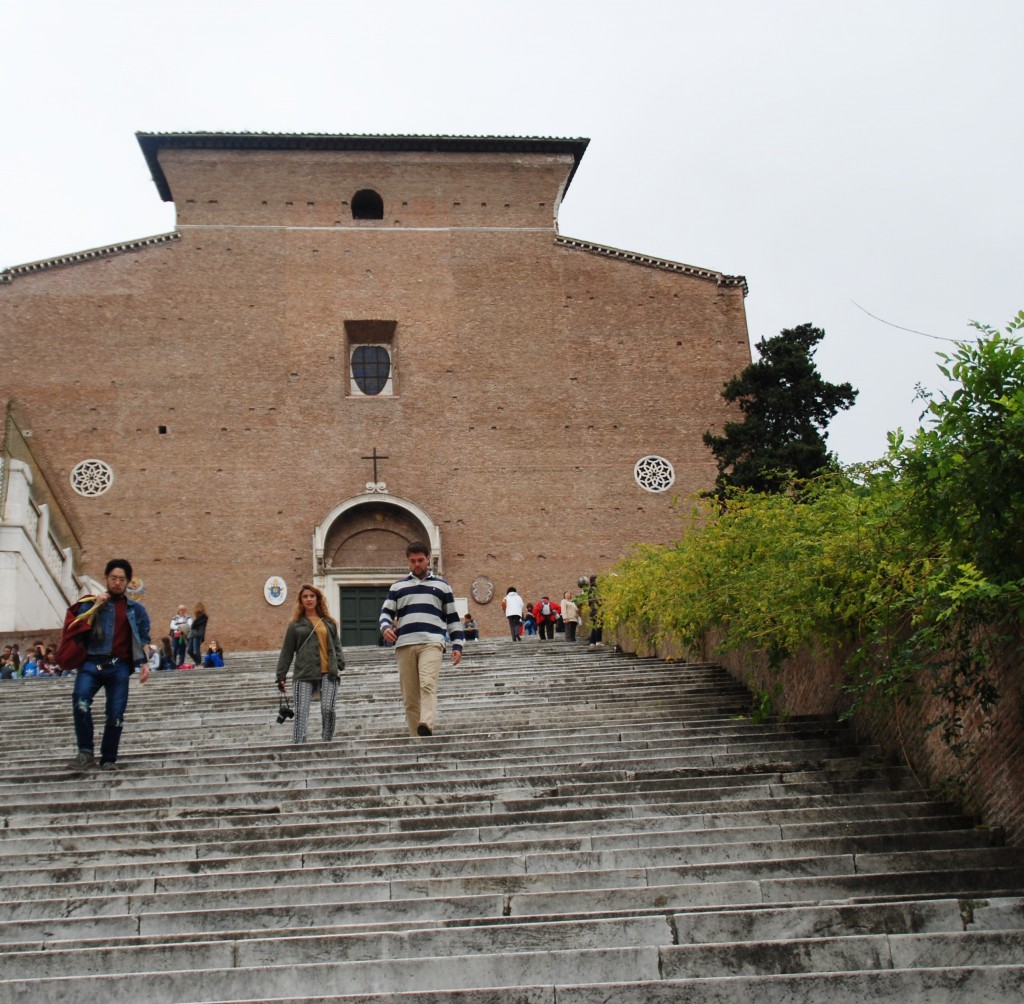
Within a few steps, I found myself looking up towards the Santa Maria in Aracoeli Cathedral. Travel books rave about the view from the top of the steps leading to the Santa Maria in Aracoeli Cathedral that can only be rivaled by the view atop the Cordonata. The 124 marble steps were installed in 1348, and Italians believe that if you ascend the staircase on your knees, you are sure to win the Italian lottery. Where can I buy some tickets?
The church of Santa Maria in Aracoeli stands where the Temple to Juno once stood which was destroyed before the Middle Ages. The church is most famous for its Santo Bambino, an olive wood carving of the Christ Child. The wood is said to have come from the Garden of Gethsemane and has miraculous powers.
According to the Romans, the center of the universe was located on Capitoline Hill where the ancient Temple of Jupiter once stood. The remains are since long gone, but according to historical documentation, this temple was extremely opulent as the Romans spared no expense and was as large as the Roman Pantheon. A colossal statue of Jupiter made of ivory and gold was displayed on the inside while the exterior was decorated with precious marbles and gilded roofs.
I climbed the stairs of the Cordonata leading me to the Piazza del Campidoglio, a beautiful square designed by Michelangelo Buonarroti. At the top of the Cordonata there are statues of Castor and Pollux, the twins of ancient mythology, one on each side.
Today the structures on Capitoline Hill are what remain of the Renaissance renovation of the Tabularium, the official records office of ancient Rome. Michelangelo was commissioned to design the project resulting in a beautiful trapezium civic plaza upon the hill created to impress Charles I, the ruler of the Spanish Empire.
In the center of the piazza is a statue of Marcus Aurelius mounted on a horse. Aurelius was Roman emperor during the 2nd century and was known for his contributions to philosophy. The buildings surrounding the square are the Capitoline Museums. The Palazzo Nuovo, containing a collection of Classical statues and the Palazzo dei Conservatori, housing sculptures and artwork, make up the Capitoline Museum. The contents are fascinating with items that date back to ancient BC times. The museums are also said to be the oldest in the world and are open to the public.
The Capitoline Hill gives a perspective of various time periods ranging from the Roman Republic to the Renaissance. The old structures sit among the new, hardly noticeable in a city known for its ancient ruins and renovations. My biggest regret was that I did not spend more time on Capitoline Hill exploring the museums, but I am certain that with my next tour group, we will add this to our itinerary, making it a priority.
I spent the afternoon strolling the cobblestone streets of Rome and visiting several of its neighborhoods. Soon, it was 5:00 in the evening and I had only the coffee from earlier that morning. I was tempted to order an early dinner but since Italians usually eat between 8 and 10 PM, I would have a mid-afternoon snack known as a merenda, served around 4 – 5 PM. With a few more hours of daylight, I couldn’t pull myself away from this spectacular city and it would be best to stay up as late to offset my jetlag. I had to stay awake for at least the next couple of hours, longer if I could.
Have you visited Rome and toured Capitoline Hill? What attractions and sights did you enjoy? I would love to hear about your adventure to Rome if you will kindly leave a message in the comments section below. Many thanks for reading my post about Rome’s Capitoline Hill and I wish you many Happy Travels!
What to See and What to Do:
Victor Emmanuel II Monument
Piazza Venezia, 00186 Roma, Italy
Telephone: +39 06 678 0664
- Admission Fee: Free, which includes the Museum of the Risorigimento. Additional charge for the Panoramic Terrace (Adults: 10 Euros; Children aged 18 and under and Seniors over 65: 3.5 Euros)
- Buses/Trains Info: Buses 40, 44, 84, 780 and 810; Metro station: Colosseo: Line B
- Hours: Monday – Saturday from 9:30AM to 7:30PM (last admission: 6:45PM); Closed December 25, January 1
- Scenic View: The view from the Panoramic Terrace is phenomenal and worth the fee.
- Length of the Tour: ½ hour to visit the Panoramic Terrace and an additional hour to visit the museum
- Tips for Your Visit: Wear comfortable shoes if climbing the stairs of the monument. The museum is based on artifacts from Italy’s unification and there is a tomb of the unknown soldier. You are not permitted to sit on the steps and it is recommended to visit early (preferably before 10AM) to avoid the crowds.
Cordonata
Piazza del Campidoglio
Roma, Italy
Santa Maria in Ara Coeli
Scala dell’Arcicapitolina
Roma, Italy
Telephone: +39 06 0676 3839
- Admission Fee: Free, donations suggested
- Buses/Trains Info: Buses 40, 44, 84, 780 and 810; Metro station: Colosseo: Line B
- Hours: Daily from 9:00AM to 5:30PM
- Scenic View: The view from the top of the stairs is stunning.
- Length of the Tour: ½ hour to visit the basilica
- Tips for Your Visit: Wear comfortable shoes to climb the stairs of the basilica.
Capitoline Museum
Piazza Del Campidoglio
Roma, Italy
- Admission Fee: 15 Euros for Full Admission and reduced admission for residents of Rome. Residents of Rome enjoy free admission on the first Sunday of each month. Special exhibitions may require an additional charge.
- Buses/Trains Info: Buses 40, 44, 84, 780 and 810; Metro station: Colosseo: Line B
- Hours: Daily from 9:00AM to 5:30PM
- Amenities: Videoguides, Audioguides and Radioguides are available for rental. Disability access, bookstore and coffee bar/café (i.e., coffee, sandwiches, gelato).
- Guided Tours and Audio Guides: Videoguides are available in Italian, English, French, German, Spanish and Russian for a fee of 6 Euros. Audioguides are provided in Italian and English for a cost of 4 Euros (Recommended for children ages 6 – 12). Radioguide rental is available for 1.50 Euros.
- Scenic View: Spectacular view of the Forum from the café located on the upper floor.
- Length of the Tour: 2 – 3 hours
- Tips for Your Visit: Go early to avoid the crowds. There are two buildings that display the artifacts. Don’t miss the famous statue of the She-Wolf feeding Romulus and Remus, the colossal remains of Constantine and the bust of Medusa.
Where to Stay:
Nerva Boutique Hotel
Via Tor De Conti 3
Roma, Italy
Telephone: +39 06 6992224
Where to Eat:
Antico Caffe del Teatro di Marcelo
Via del Teatro de Marcelo, 42 00186
Rome, Italy
Telephone: +39 06 678 5451
I ordered a margarita panini and it was fabulous! Check out their facebook page!
What to Eat:
- Artichokes: steamed or fried
- Cacio e Pepe: Cacio is a type of cheese from Rome’s countryside made from sheep’s milk. The dish is served over pasta and seasoned by black pepper.
- Carbonara: creamy white pasta served with pancetta and noodles
- Gelato: You have not had gelato until you have had it in Rome!
- Maritozzi is a popular breakfast pastry with chocolate chips served with espresso. Some maritozzi are filled with cream as well.
- Pecorino Romano cheese
- Pizza al Taglio is Rome’s answer to pizza with red sauce, meats, vegetables and cheeses. I also love the Italian margarita pizza with red sauce, mozzarella cheese and topped with basil.
- Porcetta: Pork wrapped around herbs and roasted on a spit
- Saltimbocca is a dish made with veal and sage wrapped in prosciutto, cooked in white wine and butter.
- Suppli is considered an Italian snack made of rice and meat with tomato sauce and filled with mozzarella cheese and then deep-fried. It reminds me of arancini in the US.
Where to Drink:
Il Goccetto (for wine)
Via dei Banchi Vecchi, 14
00186, Roma RM, Italy
Telephone: +39 06 9944 8583
Terrazza Borromini
Via di Santa Maria dell’Anima, 30A
00186 Roma RM, Italy
Telephone: +39 06 6821 5459
While the drinks are pricey, it will be worth the cost for the fabulous views.
What to Read:
- Imperium, by Robert Harris
- Roma, by Steven Saylor
- SPQR, by Mary Beard
- The Twelve Caesars, by Robert Grave
Photo Guide for Rome:
- Campo de’ Fiori for photos of the market
- The Colosseum
- Monti for upscale boutiques, restaurants and vintage stores
- The Pincio Terrace overlooking Piazza del Popolo in northern Rome
- The top of St. Peter’s Basilica
- Trastevere neighborhood for scenic alleyways, artisan workshops, the piazza at sunset, and tiny boutiques. Find the corner of Vicolo delle Torro off of Via della Lungaretta for photo-worthy pics.
- Trevi Fountain
Disclosure: Please refer to our blog disclaimer tab for more information.
